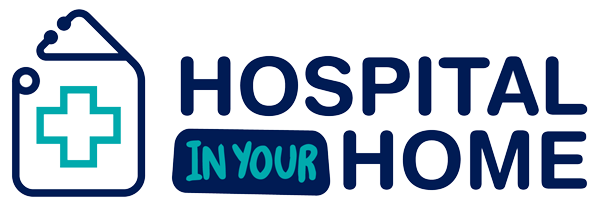Navigating the Legal and Regulatory Aspects of Acute Hospital Care at Home Programs

The concept of acute hospital care at home program is increasingly becoming a pivotal component in modern healthcare strategies, reshaping how care is delivered to patients who need hospital-level treatment without leaving the comfort of their homes.
This transformation is not just about convenience; it’s a response to a growing demand for patient-centered, flexible healthcare solutions that can also alleviate the strain on traditional healthcare facilities.
Understanding Acute Hospital Care at Home Programs
Acute hospital care at-home program is designed to offer complex medical care traditionally available in hospitals directly to a patient’s residence.
This model includes a range of services such as intravenous medications, oxygen therapy, and vital signs monitoring, all managed remotely by healthcare professionals.
The advantages are manifold: reduced healthcare costs, lower patient exposure to hospital-based infections, and improved patient satisfaction by allowing them to recover in a familiar environment.
One lesser-known fact about these programs is their origin during the early 1990s in Australia, where pioneering programs sought to address hospital overcrowding.
Today, this model has been adopted and adapted by several countries, including the United States, where it has been further propelled by the COVID-19 pandemic.
Legal Framework Governing Acute Hospital Care at Home
The legal landscape for acute hospital care at-home programs is complex, varying significantly from one jurisdiction to another.
In the United States, these programs operate under the Centers for Medicare & Medicaid Services (CMS) waivers that allow for hospital-level care at home as a part of pilot programs or permanent offerings.
However, state laws can complicate implementation. For example, some states require specific licensing for services that can be provided at home, or they may have different standards for what constitutes home-based acute care.
Providers must navigate these waters carefully to ensure compliance while delivering high-quality care.
Regulatory Compliance
Regulatory compliance is critical, with the CMS setting strict guidelines on how these programs should operate to ensure safety and efficacy.
The requirements include having a structured plan for rapid returns to hospital settings if necessary and stringent protocols for remote monitoring.
Providers must also comply with regulations concerning patient privacy under the Health Insurance Portability and Accountability Act (HIPAA), especially given the increased use of telehealth platforms and electronic data exchanges involved in these programs.
Medicare and Insurance Coverage Issues
Insurance coverage for acute hospital care at home programs can be a minefield for providers.
Medicare has expanded coverage under specific conditions, recognizing the cost-effectiveness and clinical efficacy of home-based care.
However, insurers may have varying policies regarding coverage of such programs, often requiring providers to navigate complex preauthorization processes.
This section of the industry is still evolving, and continuous updates to policies mean that both providers and patients must stay informed to maximize benefits.
Patient Safety and Quality Control
Patient safety remains a paramount concern outside the controlled environment of a hospital.
Programs must have robust systems to prevent errors in medication administration, ensure the correct operation of medical equipment, and manage emergencies effectively.
Quality control measures are stringent, often involving both technology solutions for real-time monitoring and manual oversight by healthcare professionals. Providers might employ advanced predictive analytics to anticipate complications before they become critical, enhancing patient outcomes.
Ethical Considerations
Ethical issues in acute hospital care at-home programs often revolve around patient autonomy and equity.
There is a delicate balance between respecting patient independence and ensuring adequate care.
Furthermore, there is an ongoing debate about the equity of access to these programs, as patients in rural or underserved urban areas might face significant barriers compared to those in more accessible locations.
Privacy concerns, particularly related to the handling of personal health data and the use of surveillance-like monitoring technologies, also pose significant ethical challenges.
Conclusion
As healthcare continues to evolve, acute hospital care at home programs are emerging as a forward-thinking solution to many of the challenges faced by traditional care settings.
These innovative programs are not just redefining the patient experience; they’re also indicative of a broader shift towards a more agile, patient-centered healthcare system both in the United States and globally.
Drawing on over 30 years of pioneering experience in Australia, Hospital in Your Home is at the forefront of this transformative movement.
Our deep-rooted expertise in delivering hospital-level care in the comfort of a patient’s home positions us uniquely to support healthcare providers looking to implement or enhance their own hospital-at-home services.
By staying informed about the legal and regulatory aspects, healthcare providers can ensure compliance and lead the innovations that will shape the future of hospital care at home.
As this model continues to grow, it will undoubtedly play a crucial role in the ongoing transformation of healthcare delivery, making it an exciting area for ongoing discussion and development.
If you’re looking to be a part of this future, contact Hospital in Your Home US to see how we can help you succeed with your hospital in your home program.
Together, we can make a significant impact on healthcare delivery, offering high-quality, patient-centered care right where patients are most comfortable.
FAQs
What are the key legal requirements for implementing an Acute Hospital Care at Home program?
To implement an Acute Hospital Care at Home program, hospitals must comply with state licensure laws, ensure that the program meets Medicare’s conditions of participation, and follow applicable local health regulations. Additionally, these programs must have protocols for patient eligibility assessments, emergency responses, and data privacy compliance.
How does reimbursement work for Acute Hospital Care at Home programs under Medicare?
Medicare reimburses Acute Hospital Care at Home services under the same payment rates as traditional inpatient care, provided the program is officially approved and meets specific criteria set by the Centers for Medicare & Medicaid Services (CMS). Providers must document care processes meticulously to ensure compliance and proper reimbursement.
What are the regulatory challenges in expanding Acute Hospital Care at Home programs across different states?
Regulatory challenges include varying state licensure requirements, differences in scope of practice laws for healthcare providers, and the need for alignment with multiple state health department standards. Programs must be tailored to meet each state’s specific healthcare regulations, which may require adjustments to operational practices and patient care protocols.
How do privacy laws affect the operation of Acute Hospital Care at Home programs?
Privacy laws such as HIPAA in the U.S. strictly regulate how patient data is handled in Acute Hospital Care at Home programs. Providers must ensure secure transmission of medical records, protect patient information during telehealth consultations, and implement robust data security measures to prevent unauthorized access or breaches.
Are there any specific certifications required for staff participating in Acute Hospital Care at Home programs?
Staff involved in Acute Hospital Care at Home programs often need specific certifications beyond their usual professional requirements, such as training in remote patient monitoring technologies, emergency preparedness, and telehealth service delivery. Ensuring that all staff are appropriately certified and trained is crucial for compliance and effective care delivery.
